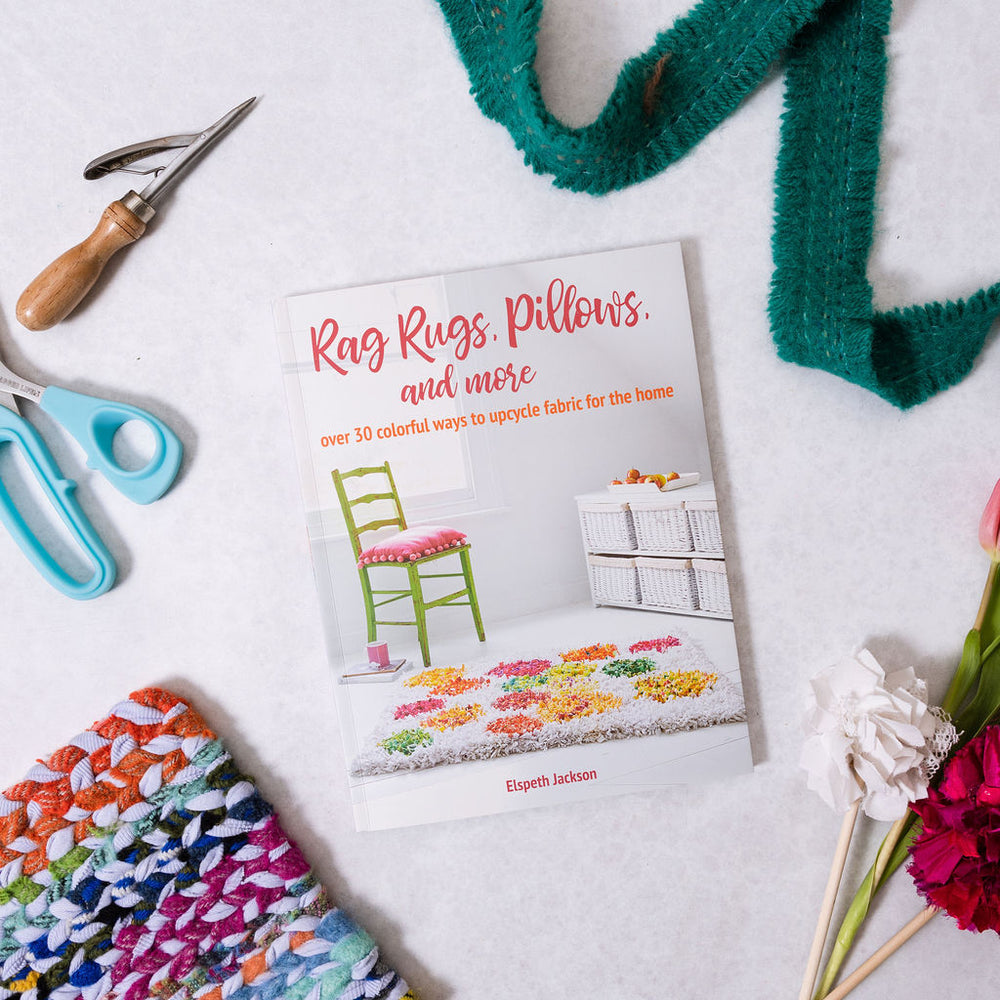Looking for the best rag rug tools to start your rag rug journey? Look no further!
At Ragged Life, we specialise in high-quality, beginner-friendly tools for all types of rag rug making. Whether you’re into rug hooking, the proggy technique or more niche rag rug styles like locker hooking, braided rag rugs or peg loom weaving, we’ve got everything you need in one place.

Rag Rug Spring Tool / Bodger
The Rag Rug Spring Tool, or Bodger as it's sometimes called, is our go-to gadget for the proggy (shaggy) and short shaggy rag rug techniques. With a spring-loaded mechanism, it speeds up the process of passing fabric strips through the rug backing, giving instant gratification.
Unlike other traditional rag rug tools where you work from the back of the piece, with the spring tool, you work entirely from the front. This means you don't need a frame to hold your rug backing taut (as you do when working from the back) and you can see how your rag rugging looks as you do it.
This tool is truly a marvel - it's beginner-friendly and great for creating thick, tactile rugs with a lovely handmade feel. Watch the Rag Rug Spring Tool in action here.
Psst: We also sell replacement springs on the Ragged Life Online Shop here.
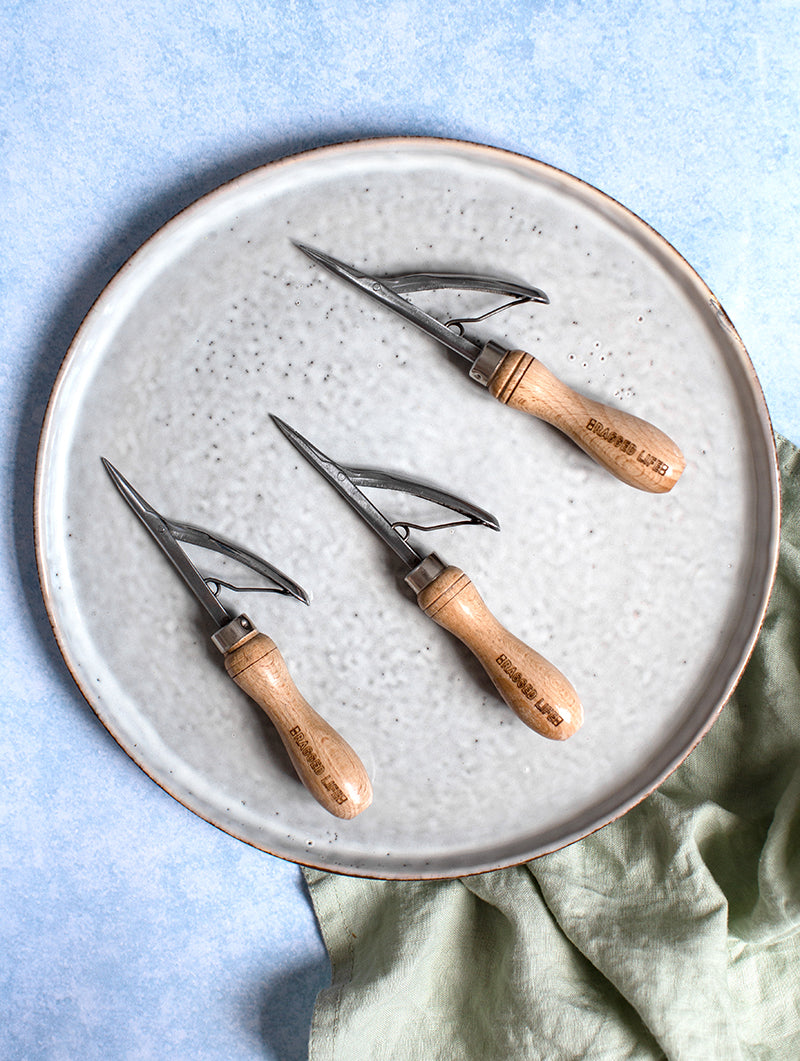
Rag Rug Cutting Gauge
Save time and effort cutting your fabric strips evenly by using our Ragged Life Cutting Gauge. This handy tool ensures your strips are the perfect length for the proggy and short shaggy rag rug techniques.
Simply wrap multiple fabric strips around the gauge at the same time and cut down the groove for consistent results every time.
Our quality wooden gauge cuts strips to 8.5cm (3.3 inches) in length and has been specifically designed with a wider groove to fit the blades of Fabric Scissors (including our super sharp Rag Rug Scissors).
An added feature of the Ragged Life Cutting Gauge is that it comes engraved with a handy "Fabric Strip Width Guide" on the side. This reminds the user of how wide they should cut their strips for the proggy, shaggy technique.
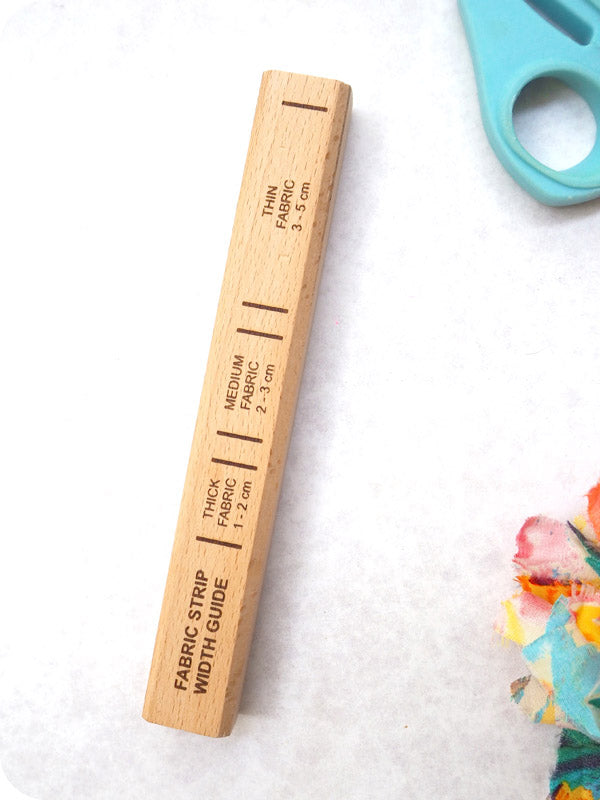
Rug Hook
Our traditional Ragged Life Rug Hook is used for rug hooking - sometimes called the"loopy" or "hooky" rug making style - which you can read more about here.
This specialist hook is designed to pull strips of fabric or yarn up through a hessian or linen base and is perfect for creating smoother, flatter rugs or wall hangings.
The Ragged Life rug hook is ideal for beginners and works best with fabric strips that are cut around 1cm in width and as long as you like.
The pointed end of the tool allows users to easily wiggle into small holes in the rug backing, whilst the fat neck of the tool enlarges the holes so you can easily hook fabric strips up through the backing without getting caught in neighbouring strands of the weave.
It's a must-have tool for rug hooking beginners. Watch the rug hook in action here.
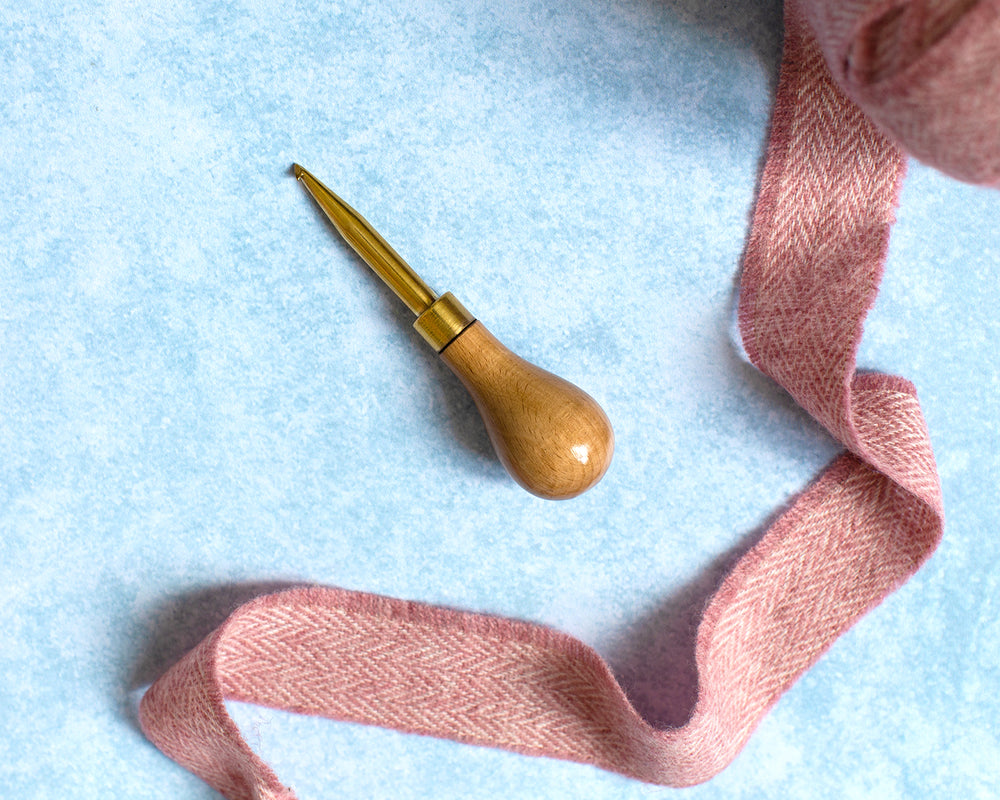
Rag Rug Scissors
Sharp and strong, our Rag Rug Scissors are designed to cut through multiple layers of fabric with ease and without blunting. These heavy-duty scissors are the tank of the scissors world and a game-changer when preparing strips from old clothes or scrap materials.
Featuring micro-serrated blades and soft rubber handles, our scissors save your hands from strain and speed up your workflow. Less time cutting and more time rag rug making is always a win!
Watch our Ragged Life Rag Rug Scissors in action here.
Psst: We even get non-rag rug makers coming to us for these scissors - they're just that good!
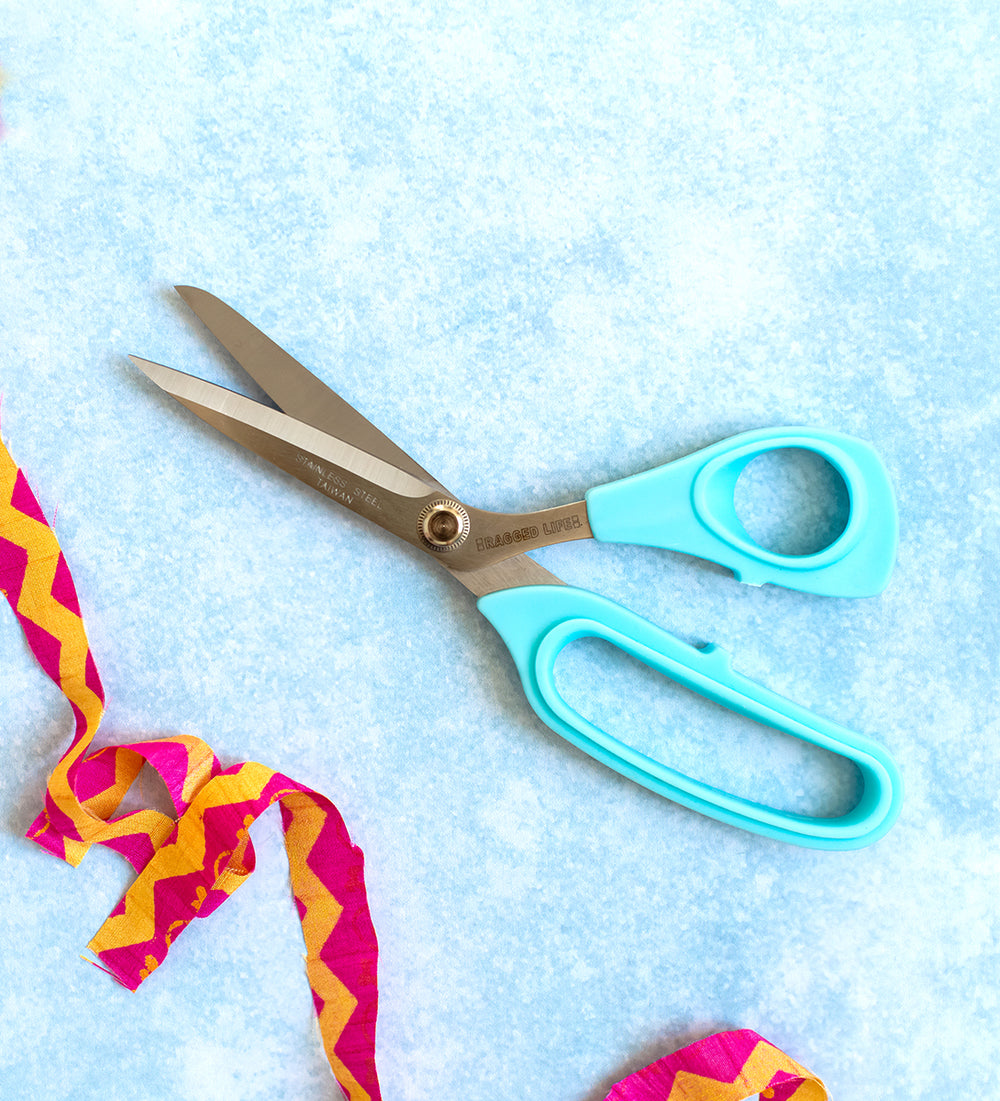

When creating a rag rug for some techniques choosing the right backing can be just as important as selecting your fabric. In this section, we’ll explore the most popular types of rug backings - including hessian (burlap), rug linen, rug warp, and rug canvas - to help you decide which one best suits your project and technique.
Hessian / Burlap
Hessian (also known as burlap in some countries) is one of the most commonly used backings for rag rugs, particularly here in the UK. In Victorian times old potato sacks were used as bases for rugs and nowadays you can even work with old coffee sacks if you're looking for ultimate eco-friendly crafting.
Here at Ragged Life, hessian is still one of our favourite rag rug backings for rug hooking, the proggy technique and short shaggy rag rugging. Hessian is affordable, durable, and has an open weave that makes it easy to push or pull fabric through.
On the Ragged Life online shop you can find pre-hemmed hessian for different sized projects (saving you time and effort), but we also sell hessian cut from the roll.
All our hessian is crafting grade (better quality = less hairy) and has a weave of around 10 holes per inch, which is ideal for most projects.
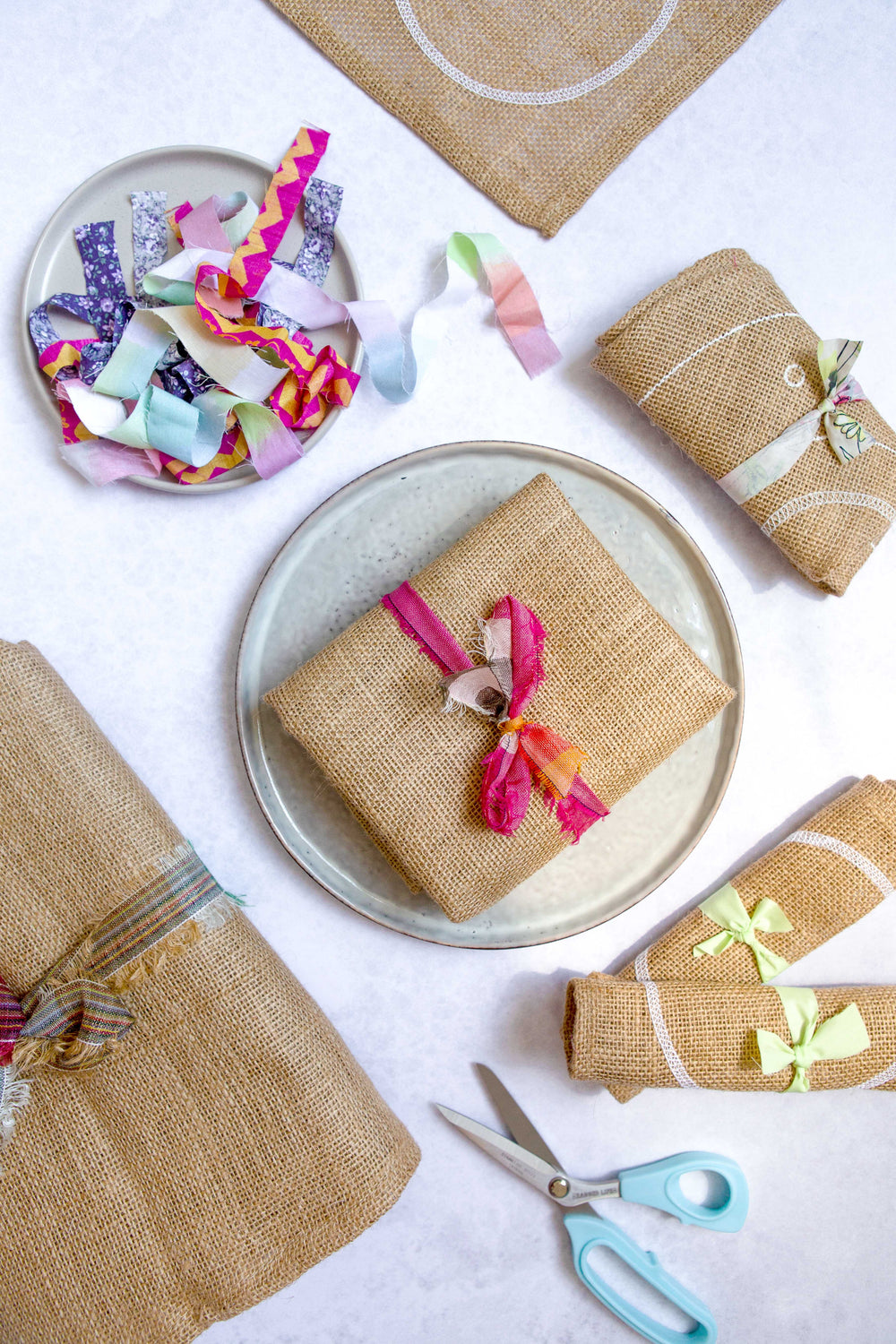
Rug Linen / Rug Warp
Here at Ragged Life, we're still at the beginning of our journey in terms of experimenting with different rug backings, but in the USA, rug linen and rug warp have started to take over from hessian (burlap), particularly as backings to detailed rug hooked projects.
For those looking for a smoother, less textured finish, Rug Linen and Rug Warp are premium alternatives to hessian. They generally have a tighter weave and are softer on the hands.
Rug linen is generally sold per metre in either a bleached or unbleached state.
We're looking to source rug linen to sell on the Ragged Life Online Shop so watch this space!
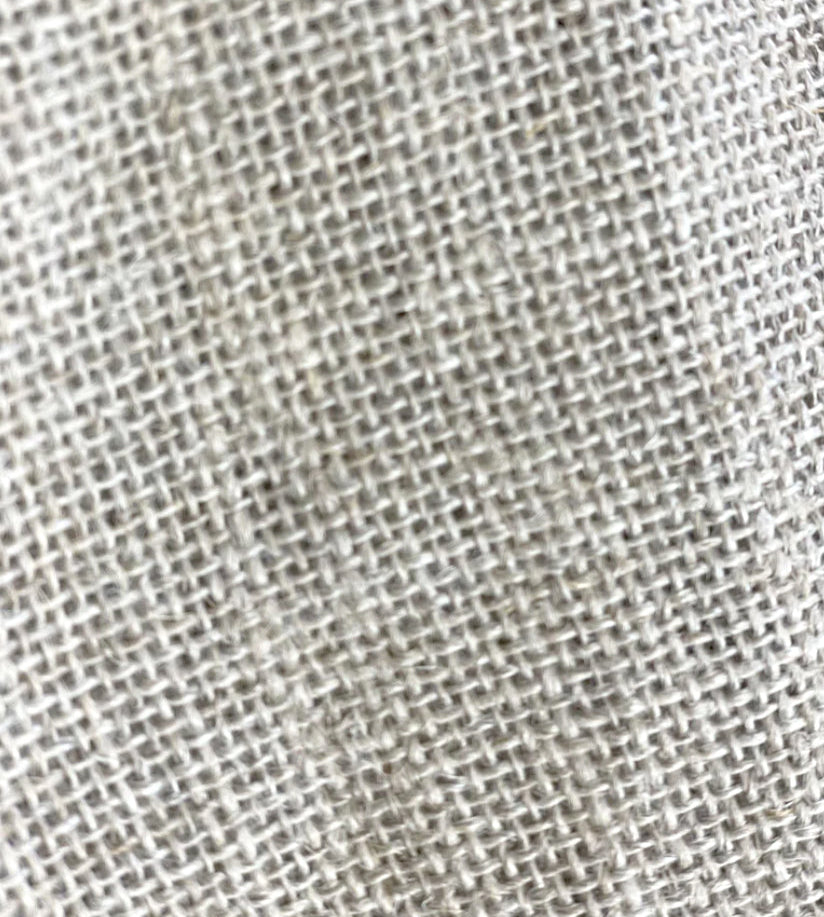
Rug Canvas
Rug Canvas is an open-weave mesh-like backing material used for latch hooking, locker hooking, and rug projects which require a very rigid base.
It mainly comes in two mesh sizes - 3.3 holes per inch and 5.5 holes per inch. The 3.3 HPI mesh is best for projects using fabric strips, where as the 5.5 HPI canvas is typically used for projects involving chunky yarn.
Here at Ragged Life, we mainly use rug canvas for locker hooking projects. We sell it per metre on the Ragged Life Online Shop and stock a cotton rug canvas which features a blue line every 10 holes. This makes marking out designs easier.
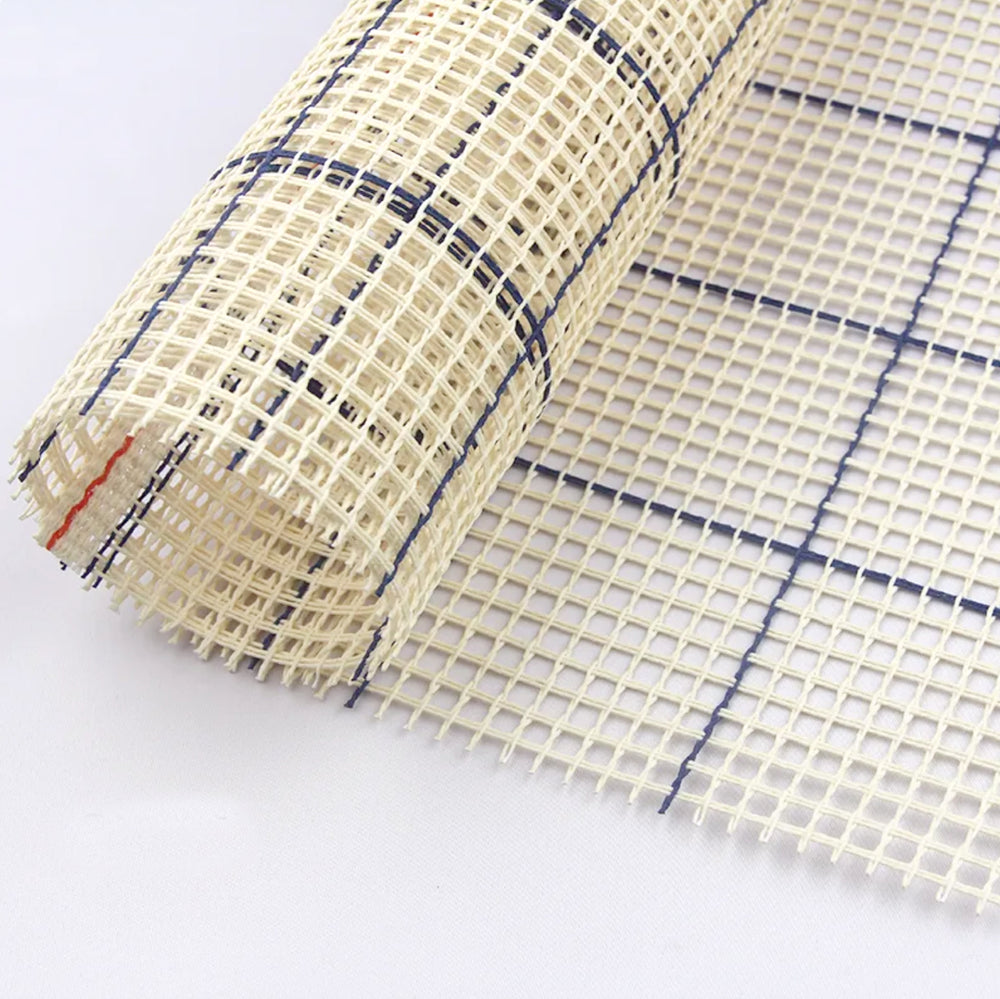

Locker Hook
Locker Hooks feature a deep hook at one end and an eye at the other. They combine elements of rug hooking and needlework and are used to pull loops through rug canvas and “lock” them in place with a threaded yarn or cord.
Locker hooks are great for making hard-wearing rugs, as once the loops are locked in position, they physically cannot be pulled out from either the front or back unless the yarn or cord is cut. This means locker hooked rugs are a great choice for pet-owners or anyone looking to make a rug for a high footfall area.
Locker hooks are generally used with rug canvas, but can also be used with a hessian / burlap base. Our Ragged Life Locker Hooks are made of strong stainless steel and designed to work with fabric and yarn. The locker needle hook is approximately 16cm long with an eye that measures around 1cm by 2mm.
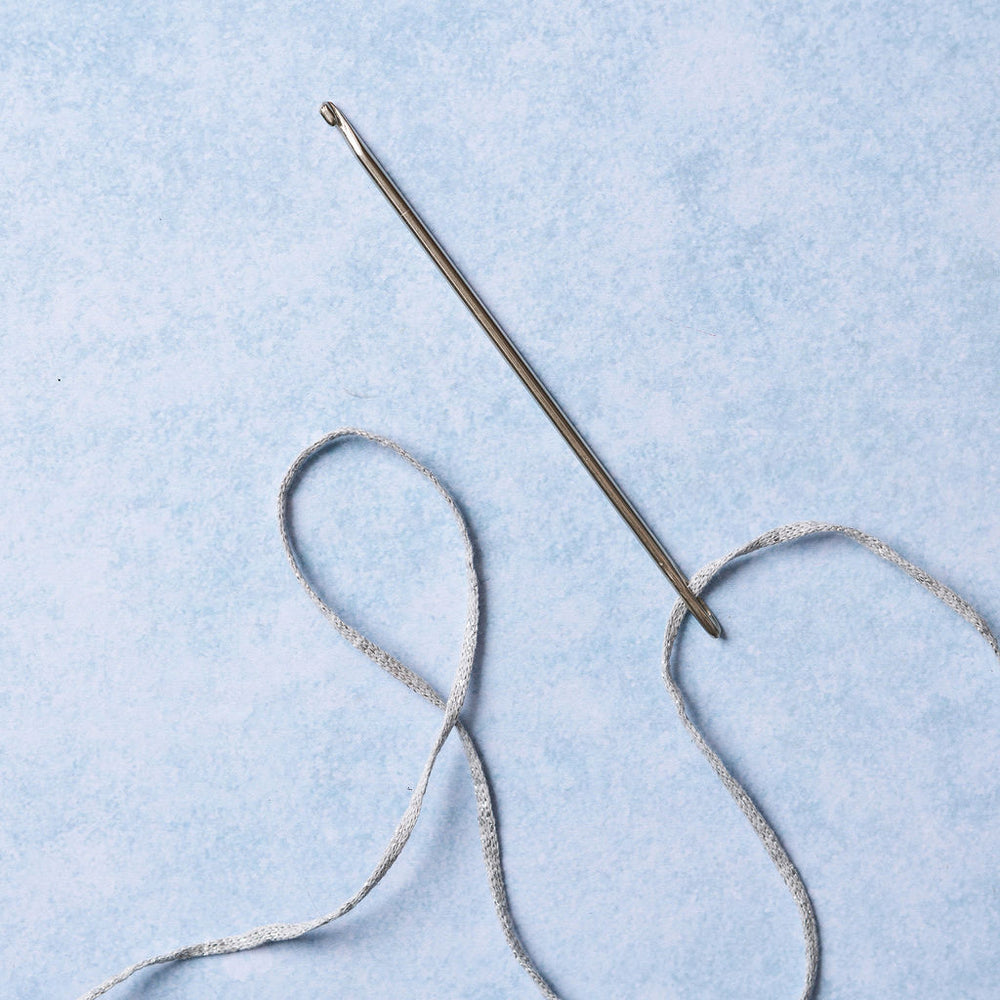
Toothbrush Rug Needle
A traditional tool with a quirky name, the Toothbrush Rug Needle (originally made from old toothbrush handles) is used to make toothbrush rugs (Amish knot rugs), braided or braid-in rag rugs.
These wooden needles have a large eye, which can be threaded up with chunky strips of fabric, and a pointed end for wiggling into tight spaces.
Toothbrush rug needles are generally used to craft oval or round rugs using fabric strips and offer a unique, coiled look.
Our Ragged Life wooden rug needles are 11cm long and taper down from max 1cm in width. They come in handy for all sorts of tasks around the craft room!
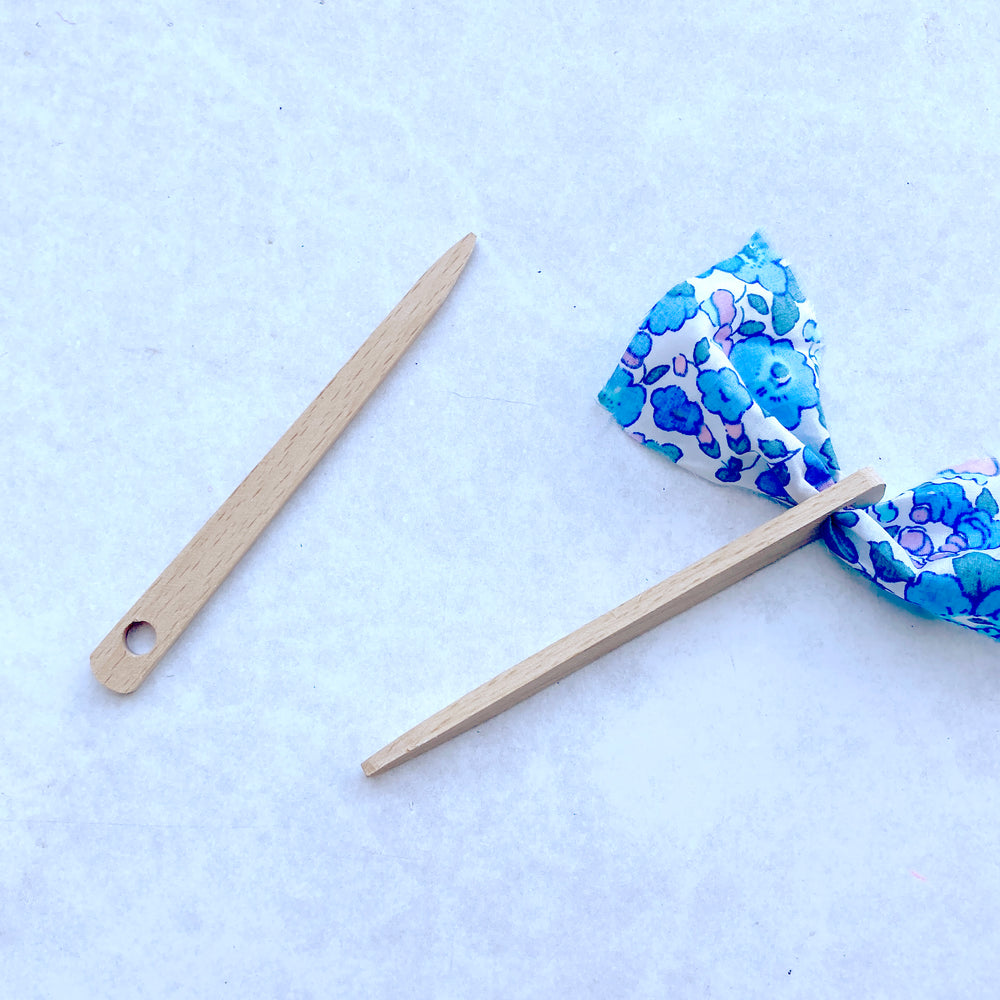
Latch Hook
The Latch Hook is a versatile tool useful not only for latch hook rugs but also for finishing off other rag rug projects. It’s especially helpful for threading in loose ends when peg loom weaving and working with smaller, fiddly areas in a design.
At a stretch a latch hook can be used for the proggy technique and rug hooking, but it is definitely worth investing in the more specialist tools outlined above if you're planning to do more than just a small project.
Our Ragged Life latch hooks have a wooden handle and stainless steel hook.
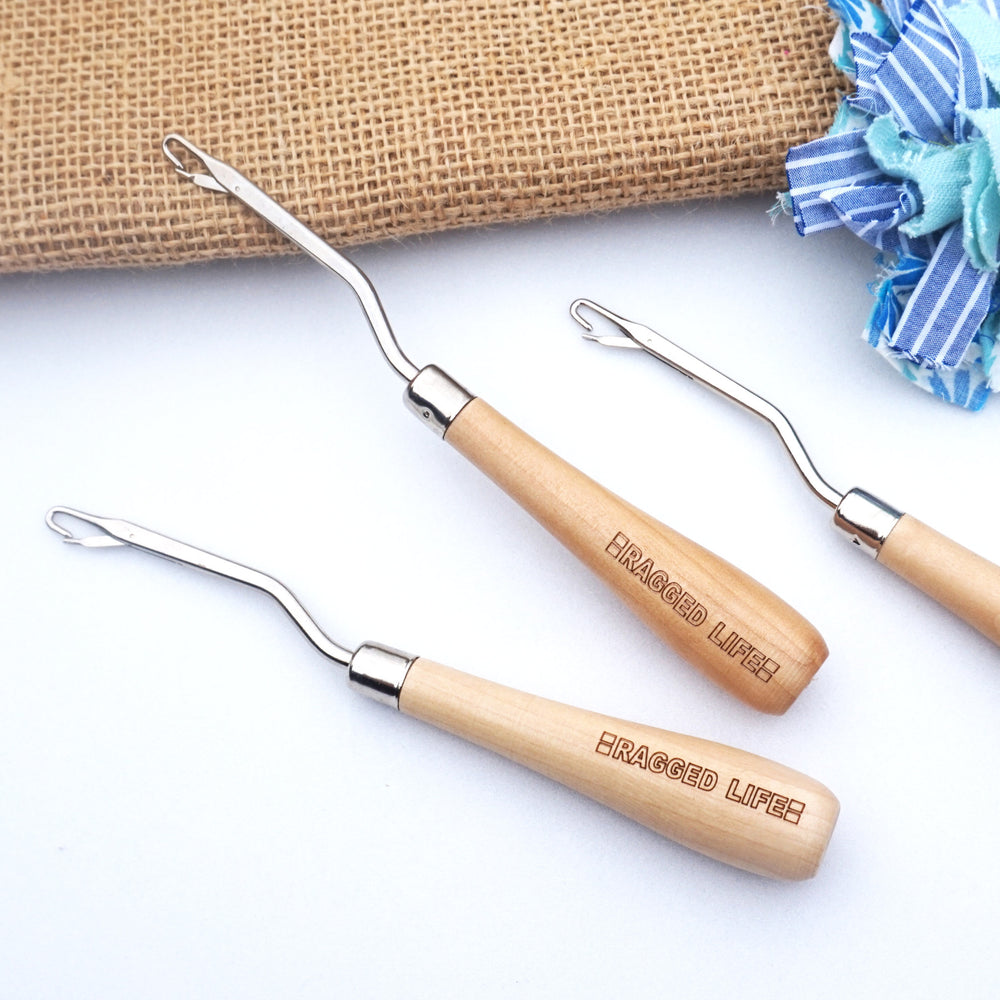
Cotton Cord / Rope for Basket Making
Cotton cord is used to do the coiled cord / rope style of rag rug making. This technique is super versatile as you can create flat projects, such as placemats, coasters and mats, but also beautiful 3D items, such as rope bowls, baskets and bins.
With a soft, high-quality cotton exterior and synthetic core, our Ragged Life cord is easy to work with, fits perfectly under the sewing machine foot and gives a lovely sturdy finish to your projects.
We sell the cord in generous 30-metre skeins, which is enough to make around 20 fabric-covered coasters, 3 rope bowls or placemats, or a small handled basket - plenty to get creative with! Thinking of a larger project? You can easily join bits of cord together partway through a project.
Careful, this technique is addictive!
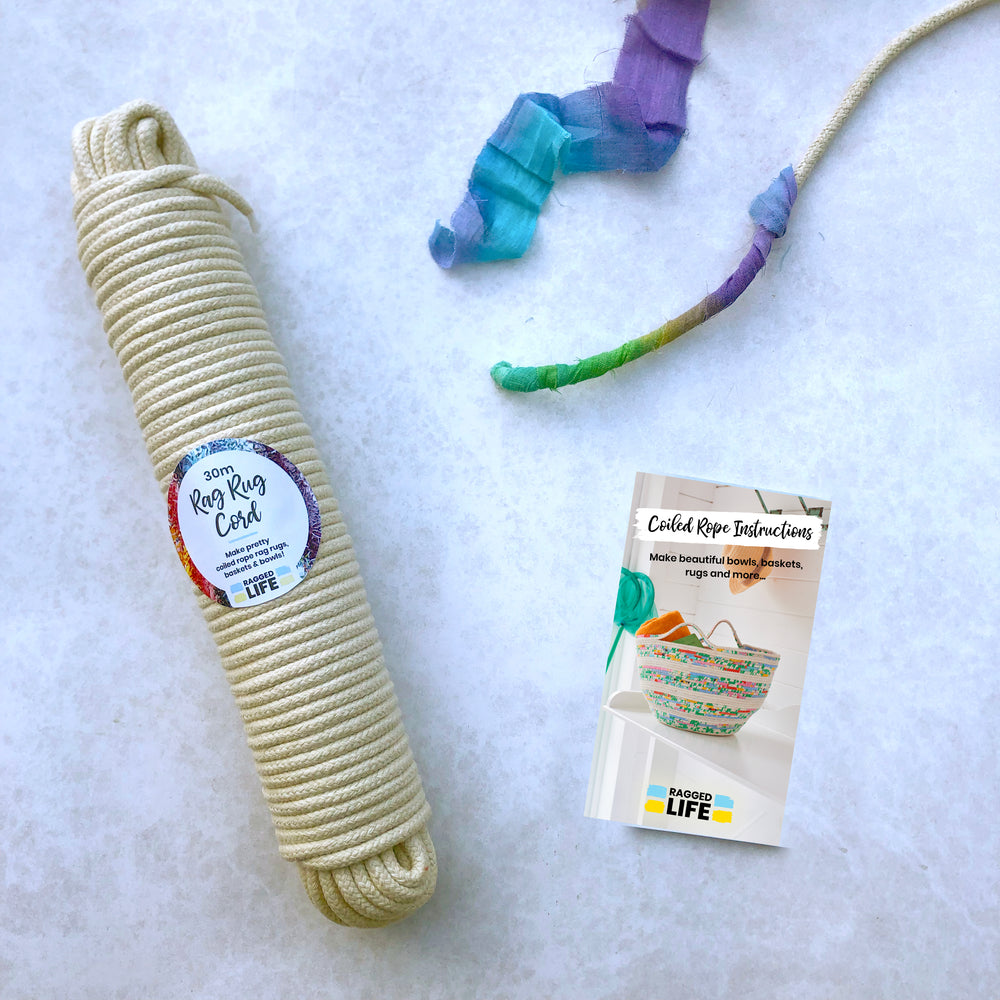
Rug Warp for Weaving
Some rag rug techniques are held together by string or yarn which is called "warp". For example, peg loom weaving and two string looming are secured in this way.
Regardless of technique, when used warp has to be strong as it forms the backbone of the proiect. The last thing you'd want is for it to snap!
The rug warp we sell on the Ragged Life online shop is a high-quality yarn made from 90% wool and 10% nylon, giving you the ideal balance of quality, durability, and strength.
Each cone contains over 1,000 metres of warp, so you’ll have plenty to keep you going through multiple projects. Plus, the classic cream colour is a versatile neutral that works beautifully with any fabric combination.
Watch how to warp up a peg loom here.
Psst: Double or treble your warp for even more strength.
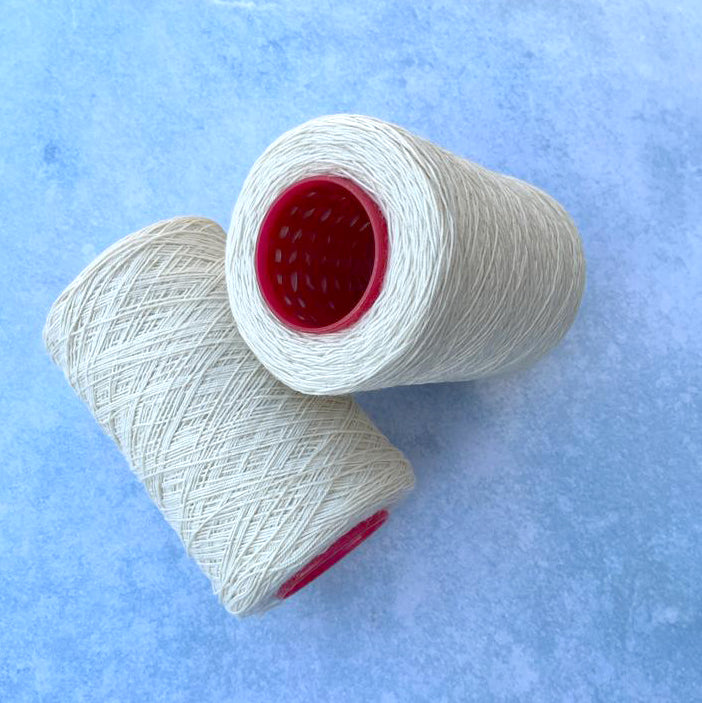

Peg Loom
A peg loom is a simple but effective wooden tool used for weaving fabric strips into sturdy, textured rugs, mats, and other handmade items.
It consists of a wooden base with evenly spaced holes that hold removable pegs. Each peg has a hole drilled near the base for threading up with warp (usually string or yarn). As you weave fabric strips in and out between the pegs, the weaving builds up the pegs. Once the pegs are full, the weaving is transferred onto the warp strings and the process continues until the project is the size you want.
Peg looms are ideal for beginners and seasoned crafters alike, offering a relaxing, rhythmic way to upcycle old fabric into beautiful, practical creations. Read more about peg loom weaving here and watch our free tutorial series on YouTube here.
We sell 90cm and 50cm looms on the Ragged Life Online Shop...
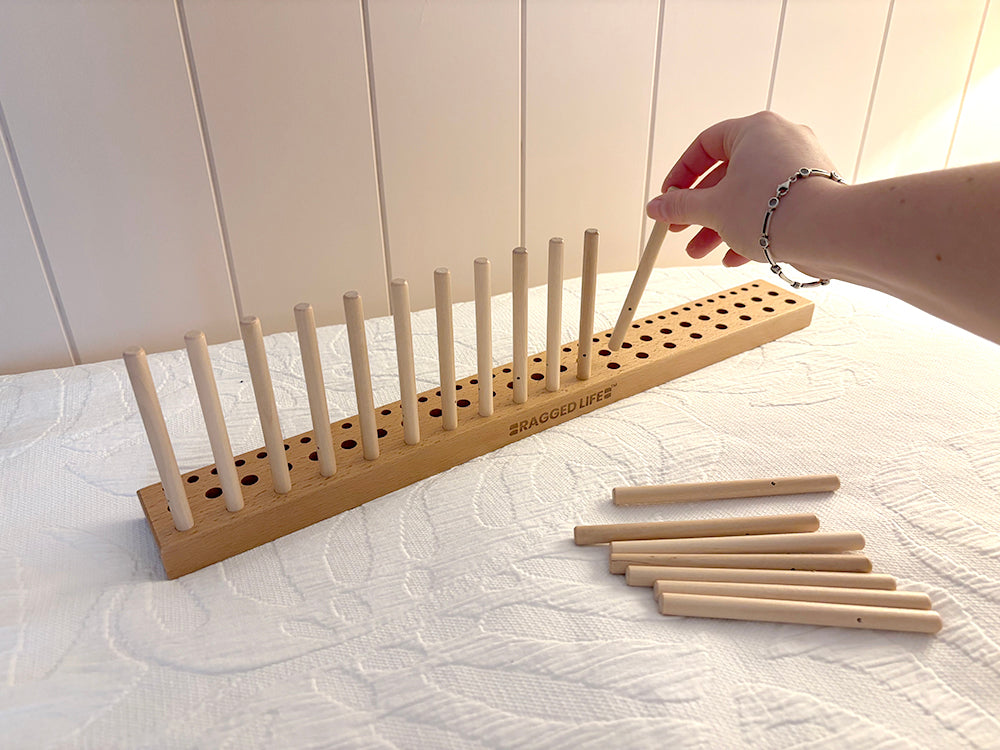
Two String Loom
A Two String Loom is used to make long strands and garlands of textured shaggy rag rugging. It's quite a niche tool, but is ideal if you're looking to add texture to 3D items. For example, we use it to make our iconic Rag Rug Christmas Trees.
To use the loom, you wind two strings as tightly as possible between the vertical upright of the loom and the vertical dowel at the end. Short strips of fabric are then knotted to the two strings to create the garland, which has a flat bottom and tufted top.
This is one of the easiest rag rug techniques out there and requires next to no concentration.
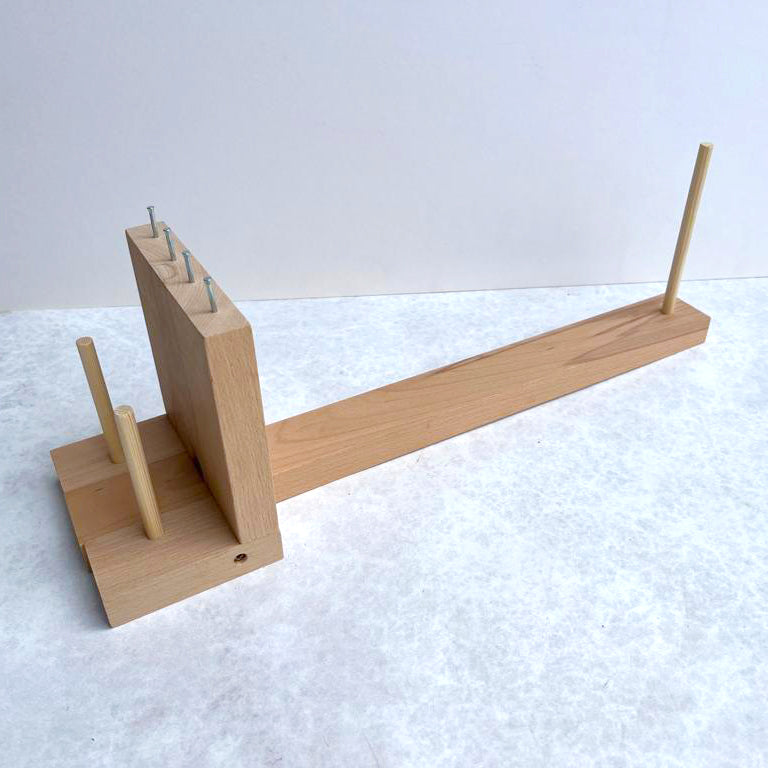
Twining Loom
A twining loom is a large wooden frame used to weave fabric strips around vertical warp threads using a twisting technique known as “twining.”
This method not only creates strong, structured rugs but also allows for gorgeous patterning and colour play, making each piece truly unique.
Due to their size, we only sell twining looms on a pre-order basis and don’t keep them in regular stock. If you’re interested in purchasing one, please email us at hello@raggedlife.com to enquire about availability and lead times. We sometimes run twining workshops on wire baskets and twining looms, so keep an eye out for upcoming workshops here.
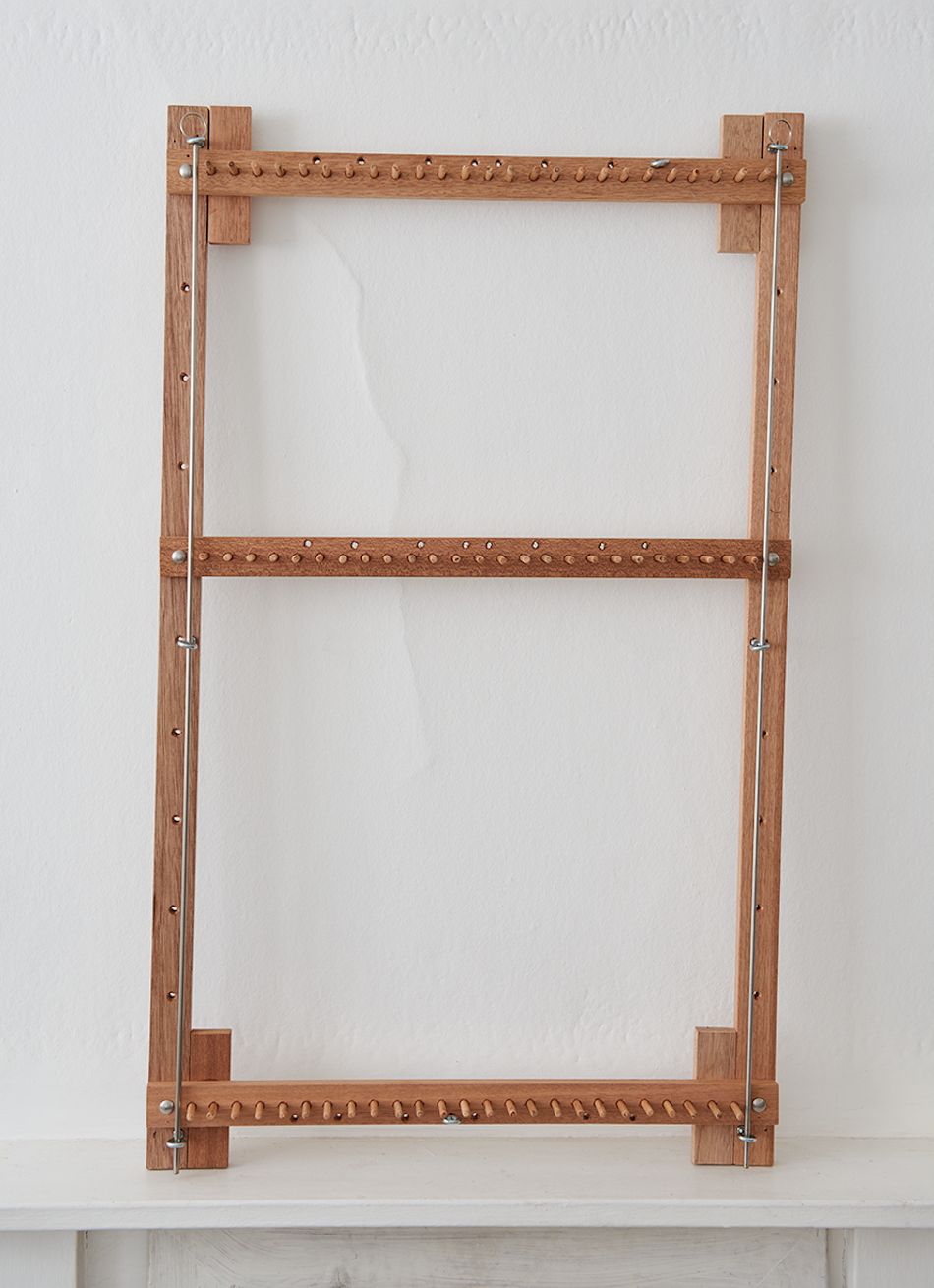

Rag Rug Techniques for Beginners Book
Rag Rug Techniques for Beginners is the ultimate practical guide for anyone looking to learn how to rag rug for the first time!
Featuring eight different rag rug techniques from across the world, inside you’ll find clear, step-by-step instructions and illustrations for how to turn old textiles and clothing into pretty and practical homeware and fashion.
Choose from 30 inspiring projects in the book, which range from rugs and cushions to wall hangings and accessories, all designed to help you build your confidence and skills as you go. Each of the eight techniques has one rug project and at least two smaller projects to get your creative juices flowing.
With helpful tips on tools, fabric choices, and finishing touches, it’s a no-nonsense, inspiring resource for beginners who want to dive straight into making beautiful, practical pieces.
Techniques featured in the book include proggy rag rugging, rug hooking, short shaggy rag rugs, locker hooking, peg loom weaving, coiled cord rugs, rug twining and stitched rag rugs
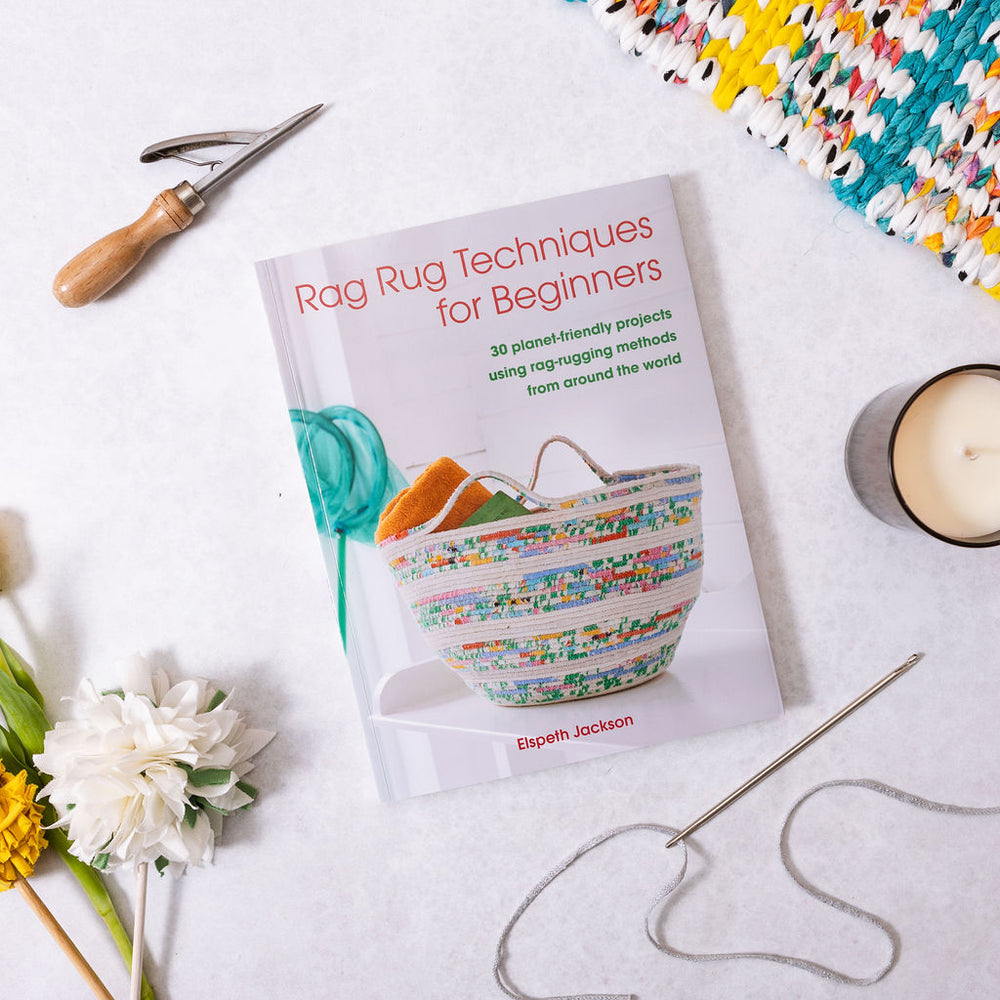
Rag Rugs, Pillows & More Book
Rag Rugs, Pillows and More is Elspeth Jackson’s first book and a fantastic introduction to modern rag rugging with a creative twist. It focuses mainly on two core techniques - the shaggy, proggy style and loopy rug hooking - and walks you through everything you need to get started, from choosing the right tools and fabrics to finishing your projects neatly.
The book features over 30 fun and achievable designs, including colourful rugs, stylish decorative pieces, quirky accessories, and even a rag rug bouquet, all brought to life with Elspeth’s trademark clear instructions and vibrant photography. It’s perfect for anyone who wants to start rag rugging with confidence and add a splash of handmade charm to their home.
